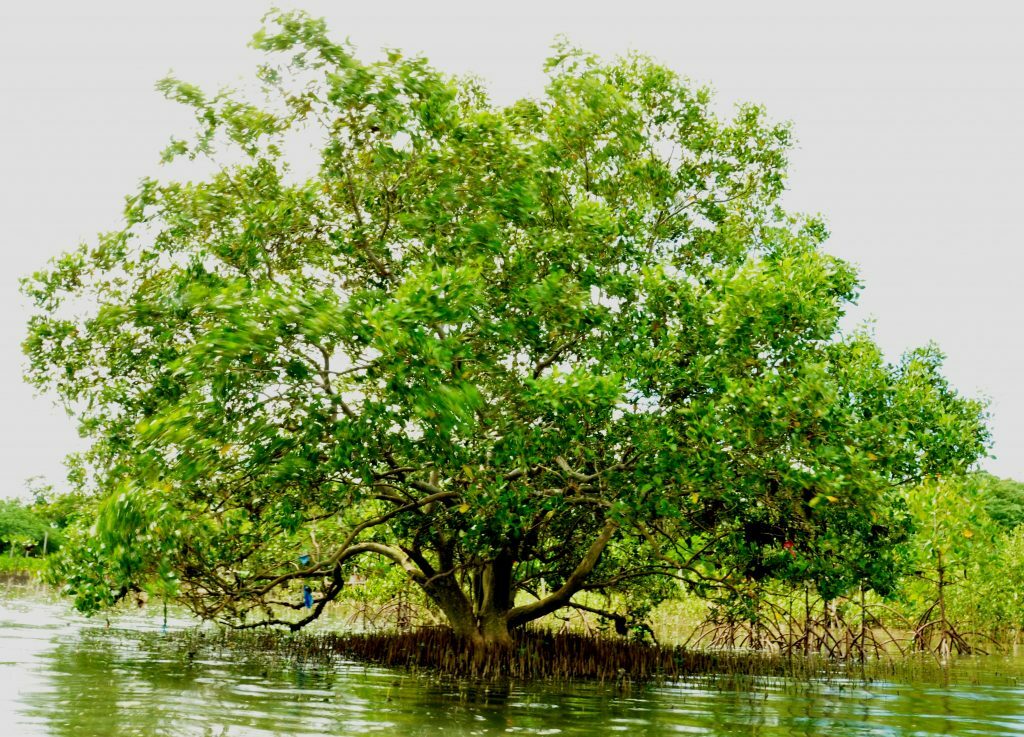
Mangroves are trees or
Mangroves have specialized parts
which they use as an adaptation to their harsh environment. Typically, specific
species of mangroves are naturally located at the zones where they are most
adapted to. Mangroves grow along a salt gradient, wherein, mangroves which grow
closer to the sea have more tolerance to high salinities and stronger wave
action.
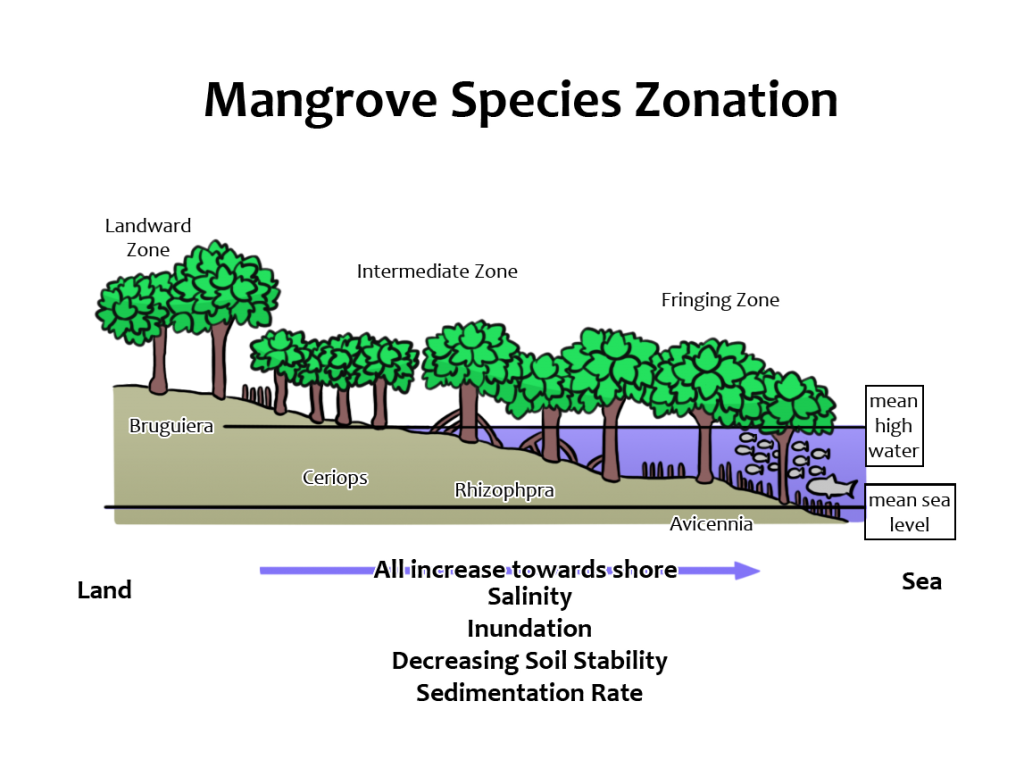
Image adapted from “Why protect mangroves” (pamphlet). Redrawn by Tyler Gantuangco.
Mangroves grow best in areas with low wave
energies as high wave energies destroy the shallow root systems of mangroves
(WLM, 2011). For example, the genus Rhizophora, can survive in the most inundated areas and
prop themselves above the water level with stilt/ prop roots and can then
absorb air through small pores in their bark called lenticels.
The genus Aviccenia on the other hand, (commonly known as Black mangroves)
naturally grow as the front-liners among the mangrove species, indicating that
they are also the most salt-tolerant and the most resilient to high wave
energies. These mangroves have
specialized root-like structures called pneumatophores (sometimes called pencil roots), which stick up out of the soil for aeriation
and are also covered in lenticels.
Genus Ceriops which
generally occurs more landward in the intermediate zone have another form of
mangrove roots called buttress roots. Buttress roots, unlike regular
roots do not continue their growth underground as they do above, underground
buttresses develop a huge amount of small roots that grow in the soil under the
buttress root.
Cone roots belong to pneumatophores and are developed by Sonneratia species and Xylocarpus. Sonneratia mangroves develop a flat root system, the underground, horizontally growing roots grow away the trunk and develop cone roots in regular intervals which normally reach a height of 40 to 60cm, measured from the soil to the tip of the cone root.
Knee roots on the other hand are developed by the Bruguiera species. Knee roots emerge as a root loop from the underground root system and allow the exchange of gases in oxygen-poor sediments. Each underground horizontally growing root develops several knee roots at regular intervals.
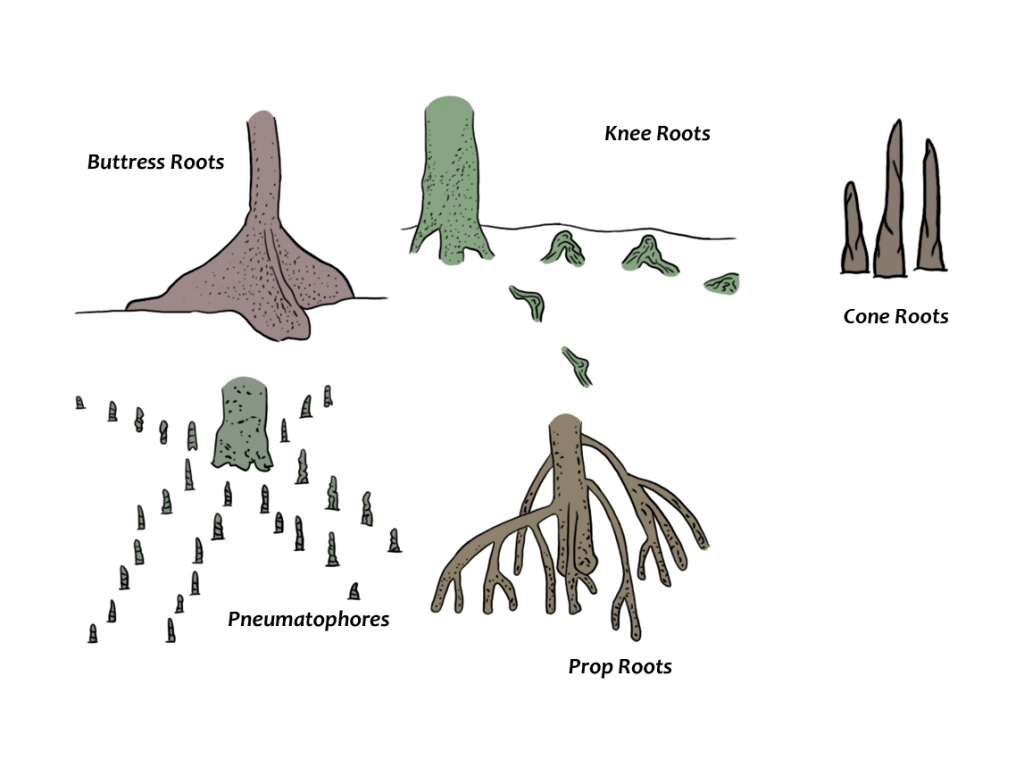
Although Mangroves are always associated
with being able to withstand strong waves, high wave energy areas actually prevent
seedling establishment and the build up of fine sediments which is needed for growth.
That is why it is crucially important to take note of the weather forecast to
make sure that you are planting mangrove seedlings during a season where waves
are not as strong! Moreover, mangrove seedlings, just like any other plant,
need enough sunlight to grow (They’re generally shade intolerant!). Thus,
seedlings should not be planted in very close densities so seedlings won’t be
shaded by other larger mangroves. Many researches recommend to actually first
plant these seedling sin nurseries before planting them and have a two-year
monitoring of their growth to keep debris and barnacles away from seedlings.
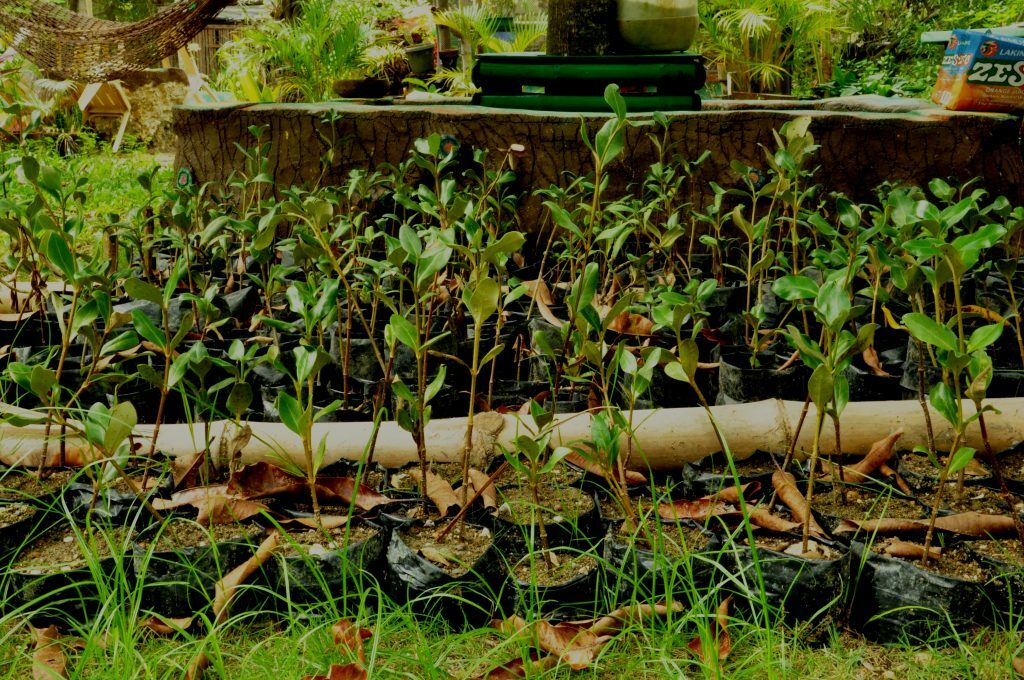
Interested to learn more about mangroves? Read about the mangroves’ functions and ecosystem services here.
References:
Kathiresan, K., & Bingham, B. (2001). Biology of mangroves and mangrove ecosystems
Long, J., & Giri, C. (2011). Mapping the Philippines’ mangrove forests using
Macintosh, D., & Ashton, E. (2002). A reviewofmangrove biodiversity conservation and management. Centre for tropical ecosystems research, University of Aarhus, Denmark.
Polidoro, B., Carpenter, K., Collins, L., Duke, N., Ellison, A., Ellison, J., . . . Ong, J. (2010). The loss of species: mangrove extinction risk and geographic areas of global concern. PLoS ONE 5(4):e10095.
Primavera, J., & Esteban, J. (2008). A review of mangrove rehabilitation in the Philippines: successes, failures and future prospects. Wetlands Ecol Manag 16(3):173–253.

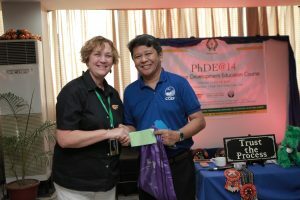

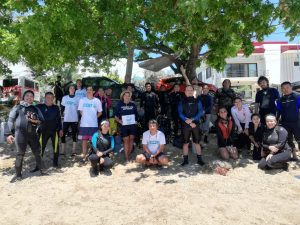
Bradley Plohr
17 Oct 2019Greets! I was enjoying your blog today and wanted to drop a line that it was very cool. I thought I’d share a website too. You can learn about past life quizzes there. Check it out if you’re interested. Thanks!!